
Decarbonization in HVAC: Unlocking Efficiency with Phenolic Ductwork
Decarbonization within the HVAC industry is a strategic approach toward reducing carbon emissions and promoting sustainable practices through deliberate choices in construction, operation and maintenance. With organizations like ASHRAE leading the way by setting standards for all new buildings, including the goal of net zero green house gas emissions from operations by 2030 and to improve building processes through retrofit applications. Industry leaders are working to facilitate sustainability in HVAC construction going forward by prioritizing a reduction in emissions through electrification of equipment, energy efficient retrofits, utilization of carbon conscious materials to reduce embodied carbon usage. Supported through both regulatory and commercial leaders, the HVAC industry is setting the standard for a lower carbon building footprint.
As the industry transitions to new commitments to environmental care, phenolic ductwork can contribute significantly to this overarching goal of minimizing the environmental footprint of heating, ventilation, and air conditioning systems by leveraging the many benefits of this advanced ductwork material.
Elevating HVAC Efficiency: The Phenolic Ductwork Advantage
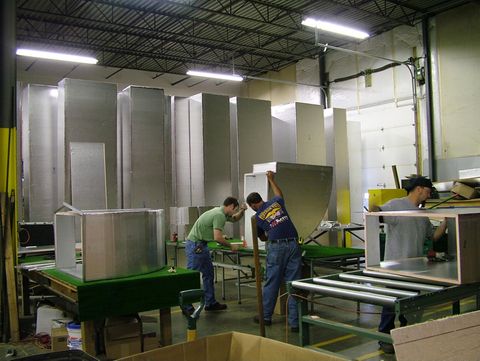
Increased Thermal Efficiency
Phenolic duct systems, characterized by low thermal conductivity, servers as a cornerstone for augmenting the thermal efficiency of HVAC systems. By minimizing heat loss during the distribution of conditioned air, this material aids in optimizing energy utilization. Consequently, the demand on heating and cooling equipment is reduced, resulting in lowered carbon emissions associated with energy consumption.
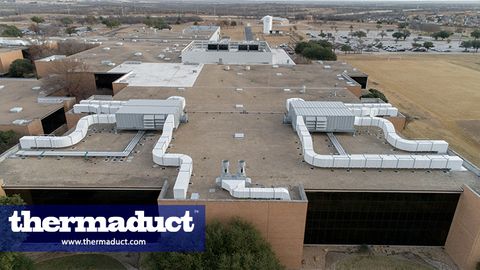
Energy Conservation and Operational Sustainability
Building upon its thermal efficiency benefits, phenolic material enables HVAC systems to operate at beak performance with reduced energy inputs with low leakage connection types and fabrication standards. By giving duct the same higher efficiency specified on equipment, this not only enhances the overall sustainability of building operations but also contributes to the broader industry goals of mitigating environmental impact through responsibly utilizing resources.
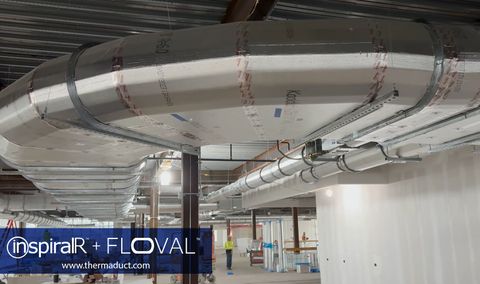
Fire Resistance and Enhanced Safety
In addition to its thermal and energy saving advantages, phenolic ductwork can significantly enhance safety measures within HVAC systems. Its inherent fire-resistant properties provide an additional layer of protection, reducing the likelihood of fire incidents and the associated environmental consequences that can go against decarbonization goals.
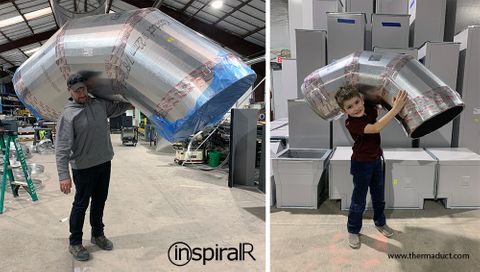
Lightweight Construction for Reduced Transportation Impact
With its inherent lightweight nature, phenolic ductwork not only is easy to install within buildings, but also contributes to a reduction in transportation-related carbon emissions. The lighter weight of the material translates into lower transportation energy requirements during both manufacturing and distribution phases applications. This reduction in the environmental impact associated with transporting HVAC systems minimizes the carbon footprint of supply chain and logistics of projects.
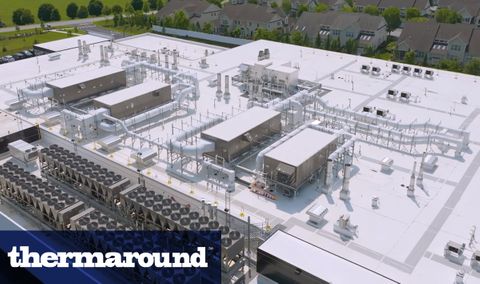
Environmental Stewardship and Regulatory Compliance
By utilizing phenolic ductwork, HVAC industry leaders are demonstrating their commitment to environmental stewardship. With an ever-evolving regulatory framework emphasizing sustainable building practices and emissions reduction, incorporating phenolic ductwork can position HVAC systems as key contributors to a greener and more responsible built environment.
Savings for Today - Sustainability for the Future
The use of phenolic ductwork in the HVAC industry to approach decarbonization has many benefits. By addressing thermal efficiency, energy conservation, safety and long term sustainability with innovative materials, the HVAC industry can show its commitment to advancing environmental responsibility now and into the future.
Thermaduct has been a leader in this push for better solutions with over 20 years of experience with phenolic ductwork. Our family of innovative products for both rooftop and interior ductwork applications have been used to increase efficiency in buildings across the United States and Canada. To see how phenolic ductwork can add value for those involved in your next project, from contractors to building owners, reach out to one of our local Thermaduct experts or contact us directly below.
What is Phenolic Ductwork?
Ductwork made of rigid phenolic materials are specialized pre-insulated systems for HVAC applications. Phenolic has made its mark on the industry with low thermal conductivity, flame and smoke resistance, reduced building loads and sustainability, ensuring safe and clean building environments. The lightweight nature of phenolic ductwork facilitates ease of handling and installation, providing HVAC contractors with a material that streamlines the construction process. The implementation of Phenolic Pre-Insulated Ductwork is not just an innovation; it's a strategic move towards achieving significant energy efficiency and reducing the environmental impact of HVAC systems.
Related Articles
As energy codes push the required insulation values higher and higher, the need for better outdoor duct solutions is growing. Thermaduct products are designed to meet the needs of outdoor applications with a high level of energy and installation efficiency.
Low air leakage, IAQ duct solutions increase the energy efficiency and health of your building. Thermaduct is here to help. Our indoor products are lightweight solutions that reduce installation weight by over 70%.


